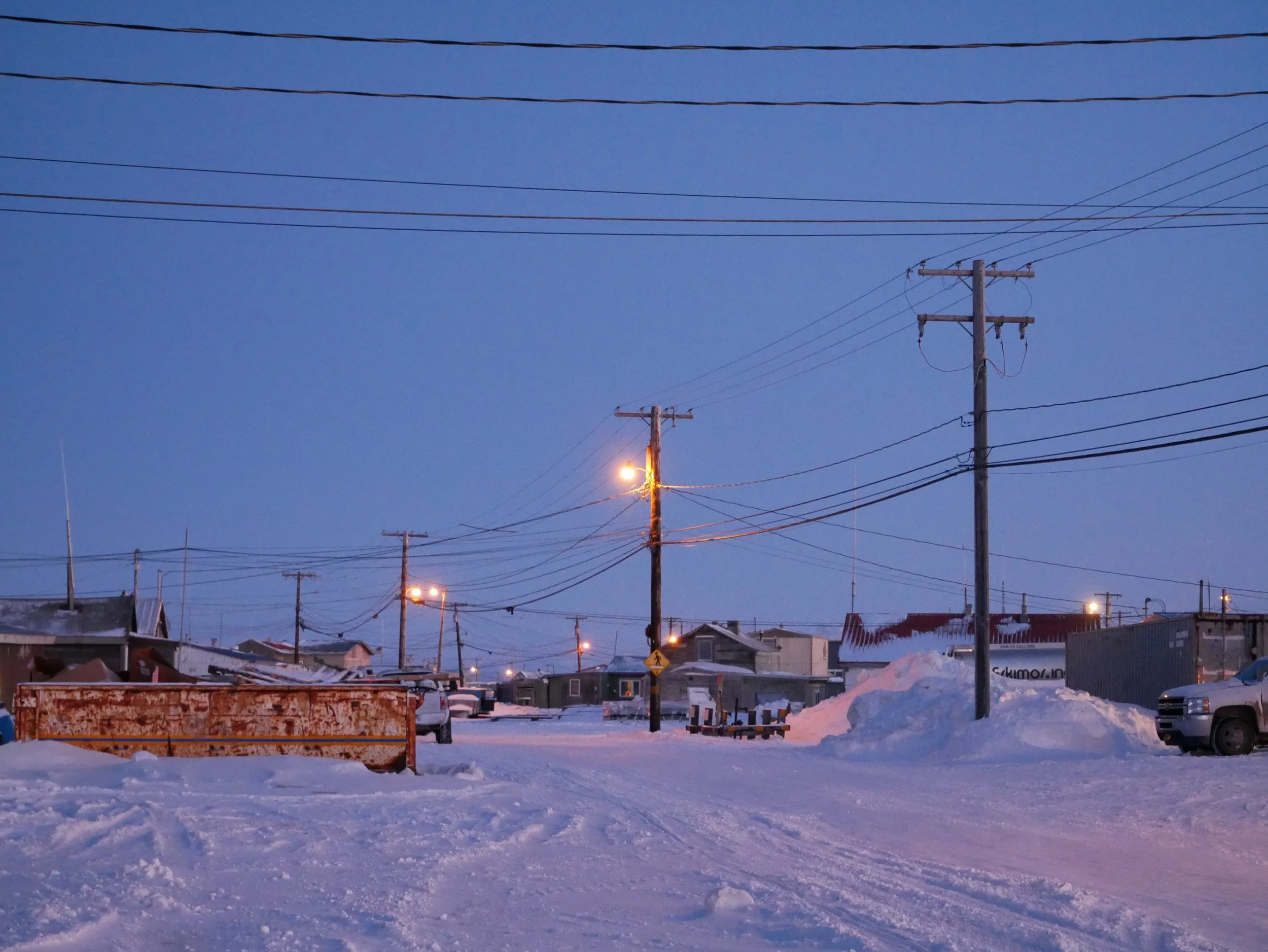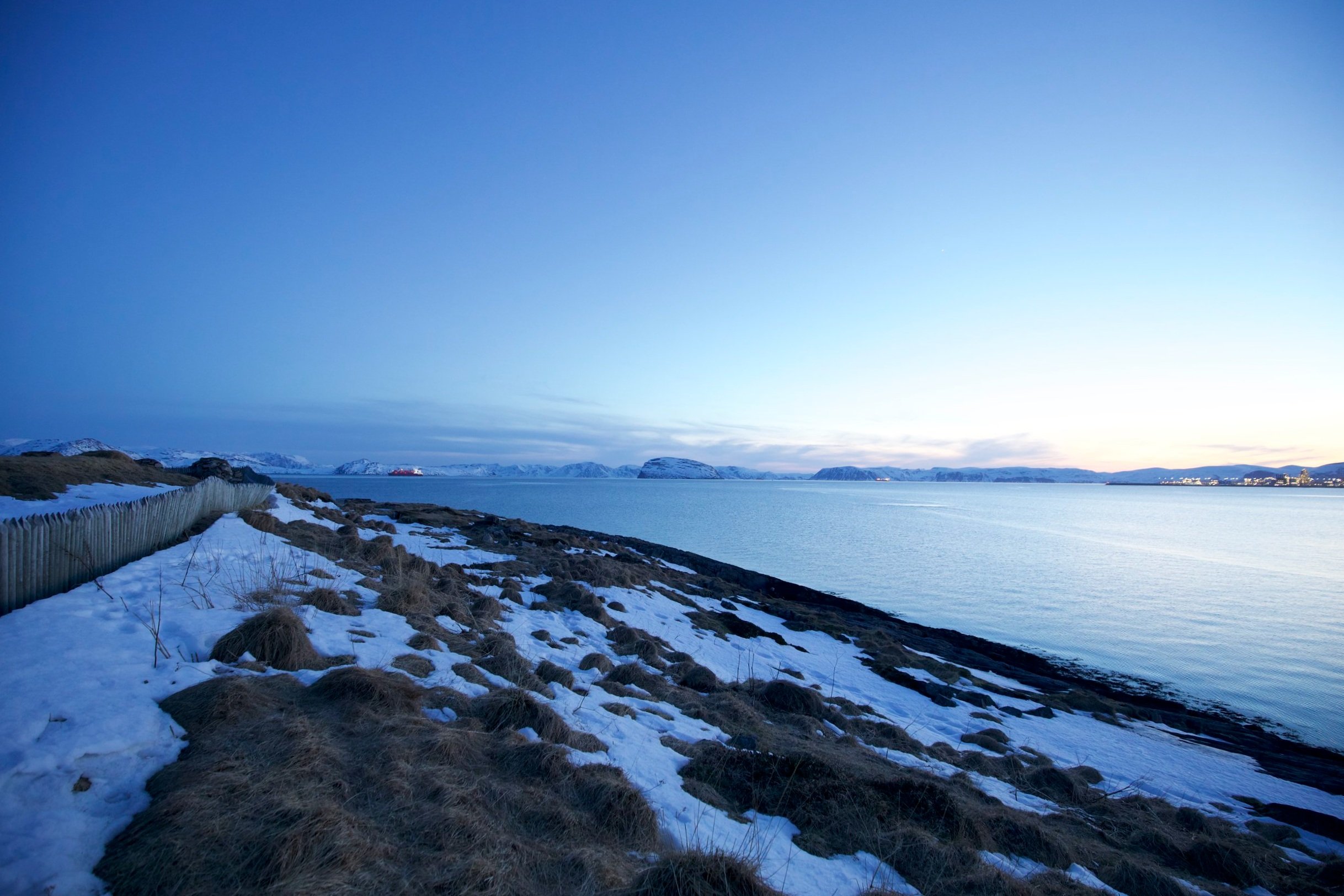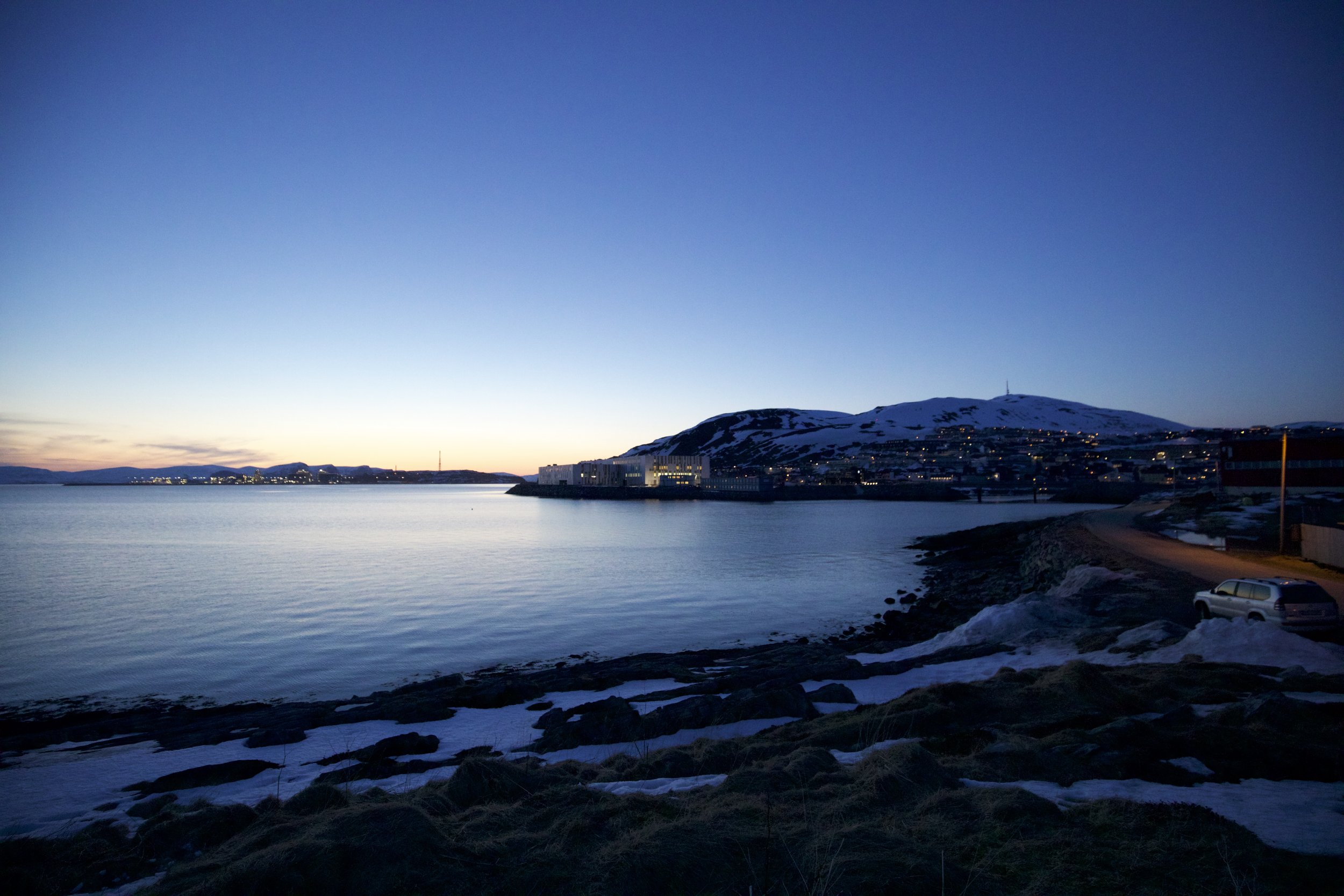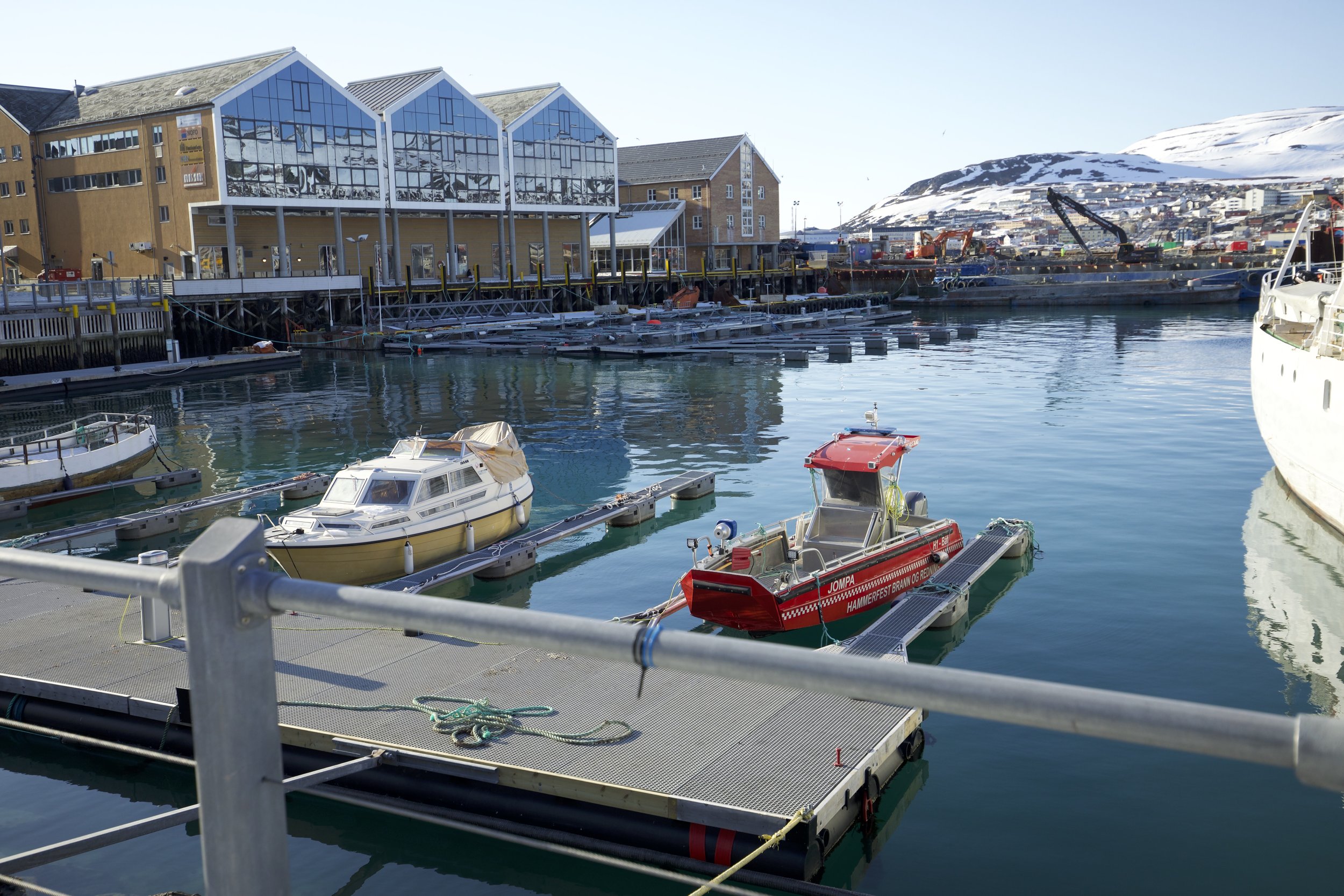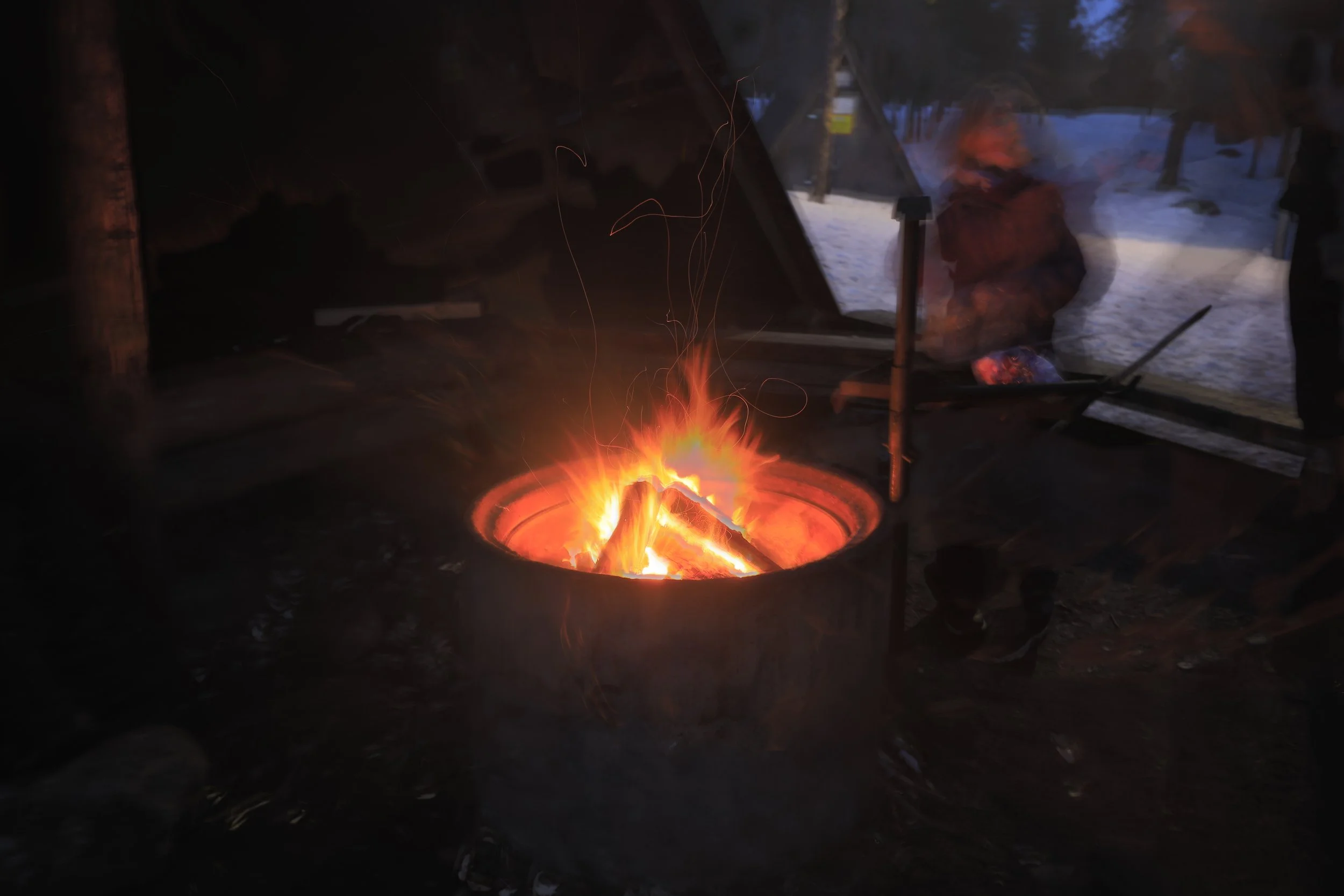Past Exhibition
A Long Solo Walk in the Far North
Russo Gallery, Haldeman Center
Hanover, NH, USA
Apr. 2024 – Jul. 2024
Exhibition Statement
Section 1 of 3
Utqiagvik, Alaska
2022.12
Approaching winter solstice, I took a 20-day walk in the Last Frontier, with flights helping me reach Anchorage, Fairbanks, and eventually "top of the world" – Utqiagvik (formerly known as Barrow). During my fieldwork in the northernmost community in Alaska, I learned about the profound perspectives of Iñupiat Peoples on how they have been finding a balance between industrial development and subsistence livelihoods, overcome various challenges in the past, maintained their traditions, and achieved sound environmental and resource governance. The captivating stories told by Iñupiat leaders and hunters during the interviews made me feel as if I traveled through time, witnessing how they used their knowledge to take care of their land and waters, and how they had been guided by the Iñupiat values to protect the wellbeing of their community and the environment amidst various challenges such as resource extraction and climate change.
The photos in this section were taken when it was nearly -30 °F outside including wind chill. It was the only clear day but also the coldest day during my visit to Utqiagvik. At that time, there was no sunrise in the Arctic Circle; dusk chased dawn, followed by the long polar night. From my home on the Tropic of Cancer to 320 miles above the Arctic Circle, there were no more heat waves and palm trees, not even snow-covered spruces; only endless snow and ice, occasionally some prominent rocks, and broken ice floating on the almost static ocean. From where I stood towards the north, there was no more land; it pointed straight to the North Pole, which I could not see with my naked eyes.
Land acknowledgment: The content included in this exhibition section is based on my fieldwork in Utqiagvik, Alaska, part of the unceded territories of the Iñupiat Peoples. I acknowledge that Iñupiat Peoples have been stewards of the land since time immemorial and have given the land incredible care. I am grateful for the profound perspectives, stories, experiences, and knowledge that the Iñupiat Peoples have shared with me during my visit.
Photos exhibited (with caption labels):
Section 2 of 3
Troms og Finnmark, Norway
2023.04
Arctic Norway – it is the place where the northern lights emerge from the fjords, where millions go chase one of the world’s greatest wonders. Yet from Tromsø to Hammerfest, when the voices and the sounds from the glamorous Nordic city life vanish as you go towards the less populated Finnmark, into a small truthful town in the midst of industrial development, you see an unfiltered side of the far north, and you find fascinating stories untold. Tromsø was where I conducted interviews with academics and Sámi leaders about LNG, wind energy, and Sámi reindeer herding livelihoods. Hammerfest was where I saw Melkøya – the island where the Hammerfest LNG plant was located – in real life. The photos in this section were taken in both Tromsø and Hammerfest.
The most remote places usually feel the most authentic and unfiltered. Even though from Tromsø to Hammerfest, it was just less than one hour of flight, the differences were quite pronounced: with globalization and tourism, I still saw familiar things in Tromsø – chain convenience stores, commercial streets and malls, tourism centers, and so on. Hammerfest was quite different. A quiet and tiny regional airport that couldn’t scan my visa, a few small restaurants and supermarkets scattered across the area, and, just like in Utqiagvik, writing down the number of a local taxi center was one of the first things I did to make sure I could still get back to the hotel from the other side of the town, as Uber service did not exist there.
Fieldwork is not meant to be all sunshine and rainbows or lighthearted novelty; it could be difficult, uncomfortable, and sometimes confusing. The residents may or may not be used to the presence of an outsider. This is one way how fieldwork differs from laid-back sightseeing. But it also blesses you with some of the most unique experiences and inspirations. I guess this is the beauty of fieldwork — when you are actually in the place and talking to the people there, unexpected things strike you, you hear captivating stories, and you start asking new questions.
Section 3 of 3
Lapland, Finland
2022.01–03 & 2023.04
The city of Rovaniemi, where Kemijoki (joki: "river" in Finnish) and Ounasjoki that flowed through Lapland met and formed into one, was where I lived alone, explored the landscape, met lifelong mentors, and reflected upon life and nature. The roles my mentors played in my personal growth were nothing less than family; Rovaniemi was like a home away from home. And no other place demonstrated better about the calming and inspirational power of nature than the far north. I am deeply grateful to Rovaniemi.
Lapland was where I stepped foot above the Arctic Circle for the first time. In my sophomore winter, I had the opportunity to take an off-term and go to the Arctic Centre, University of Lapland to do three months of research with the EU CHARTER project on Arctic environmental policy, supported by the Dickey Center’s Stefansson Fellowship. The photos in this section were taken a year later during my second visit to Lapland, when I conducted interviews with academics at the Arctic Centre about resource governance, industry, and Sámi livelihoods in Fennoscandia for my individual project.
When I revisited Rovaniemi, Lapland, I walked the same path up to the hill called Ounasvaara, yet the sun was still above the horizon after eight in the evening, the snow had melted, and the trees showed greenery and were painted orange by the last rays of the sun. The dark sky, the frozen forest, and the raging snowstorm from a year ago were nowhere to be found. It seemed that ice and snow froze and held time, and once you left and came back after four seasons had passed, the warmth of the sun already melted the snow and released time, drastically accelerating the pace of change and making everything you were familiar with somehow unrecognizable. I felt in awe once more, just like when I first saw the humbling frozen world.
Acknowledgments
Acknowledgments
This journey in the Arctic would not be possible without the support from the Dickey Center at Dartmouth College and the Stamps Foundation. They made everything possible with the Stamps Scholarship and the Stefansson Fellowship. I would like to thank Professor Ross Virginia and Professor Melody Burkins for the inspiration, mentorship, and support throughout the Stamps project on aspects from academic research and ethics to personal development, Professor Lauren Culler for the guidance on Arctic scientific research, Professor Bruce Forbes and Professor Florian Stammler of the Arctic Centre, University of Lapland for the inspiration on developing initial ideas for this long-term project during my time in Rovaniemi. Thank you Sanaa, Sharon, and Kate from the Dickey Center for the incredible help in developing this exhibition, as well as Ilona Mettiäinen for the initial guidance. I would also like to specifically acknowledge leaders and experts from the following organizations for sharing their profound experiences and perspectives:
Alaska
Department of Wildlife Management, North Slope Borough
Department of Planning & Community Services, North Slope Borough
Inuit Circumpolar Council
City of Utqiaġvik, Alaska
Voice of the Arctic Iñupiat
Alaska Eskimo Whaling Commission
University of Alaska Anchorage
University of Alaska Fairbanks
Native Movement
Norway
University of Tromsø - the Arctic University of Norway (UiT)
The Sámi Parliament
Finland
Arctic Centre, University of Lapland
among others.








